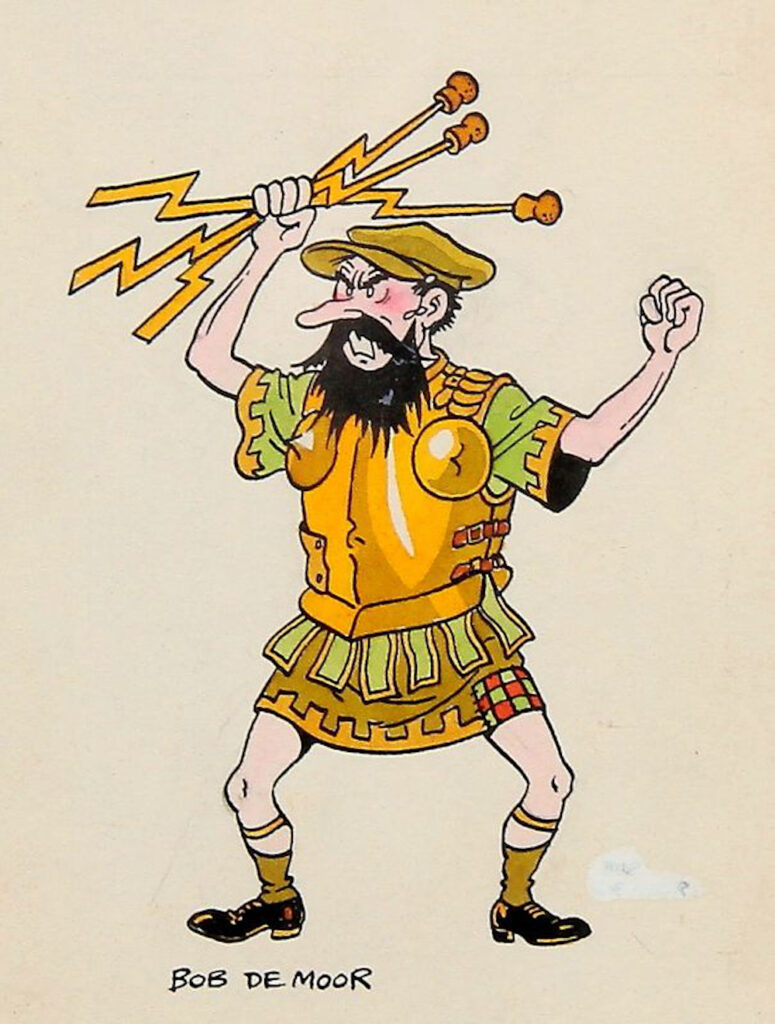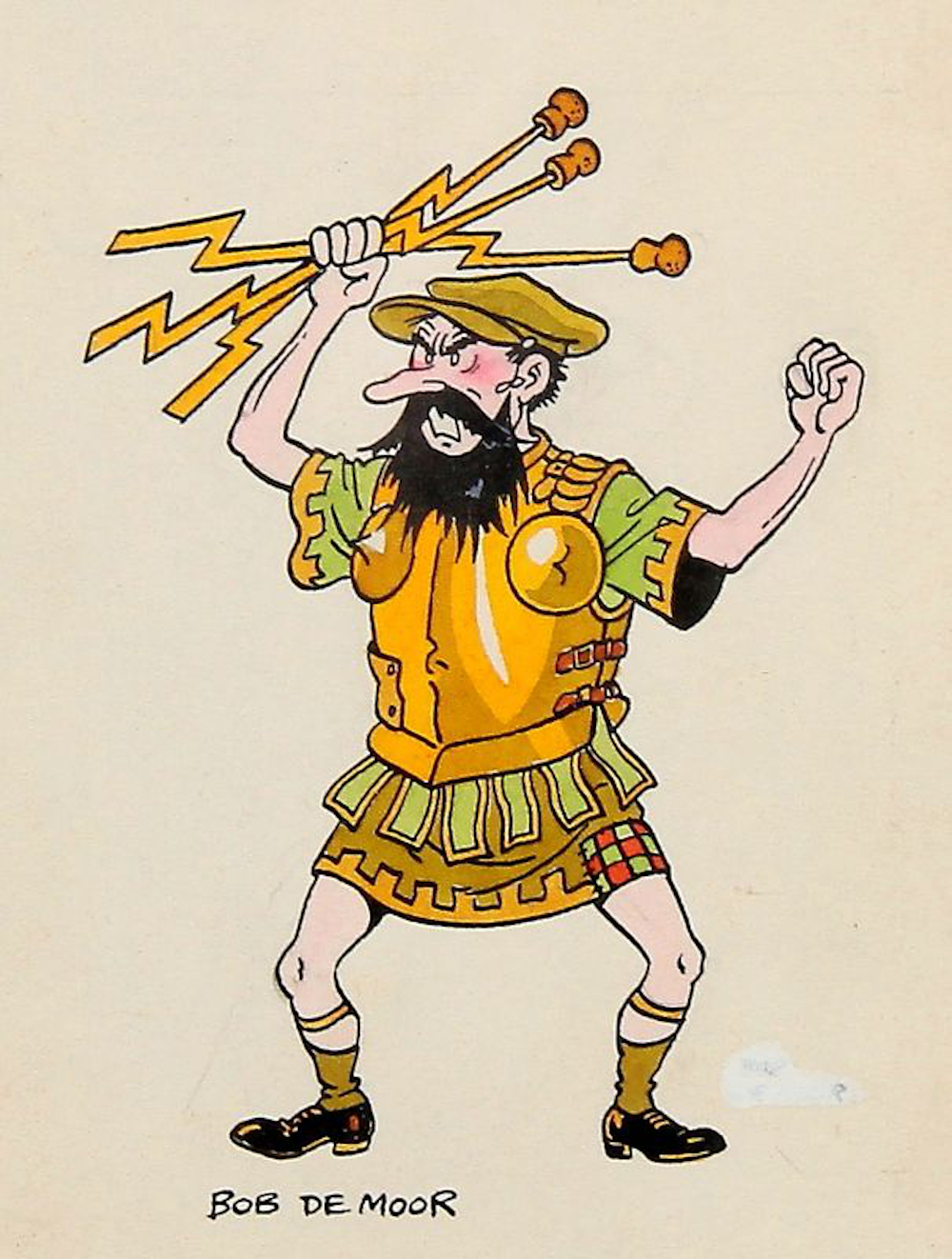One of my hobbies is going through all of the online and offline auctions that are being offered in the world of comics and sometimes a less well known Bob De Moor drawing appears.
Today I show you one of those findings.
This little drawing (11cm x 14cm) dates back from the early 50s looking at the signature used. I have not been able to trace back where it was used for, though I guess it’s from Journal Tintin but so far I have not been able to find it back, so if someone does know the context, let me know.

I doubt it was a drawing given as a present, the tipex correction would never be included in that case. So it must be an illustration for a publication.
Strangely enough, the description given for this little drawing by the auction house is not really helpful, on the contrary, it’s bogus. It talks about a ‘bearded man in a kilt’… I’m not sure what the auction master was thinking when describing this as a kilt or it should be the small patterned patch used to repair the damaged tunic. Because that is what it is: a tunic.
Now, the figure itself displays elements from different people, eras and cultures. Let’s dissect this a bit, from top till toe.
So what does the lightening stand for?
The man holds 3 lightings in his right hand. If you look closely each of the sharp points of the lightenings are protected by a champaign cork.
- The lightening as such refers to the Olympian god of thunder Zeus and his lightning bolt which is his signature weapon and symbol of power.
- But why 3? The badge for the United States Army Special Operations Command (Airborne) also features three lightenings, but that’s about it. For them the three bolts of lightning bisecting the dagger evoke the unconventional nature of Special Forces operations and represent their ability to strike or infiltrate rapidly by air, water or land.
- In Hittite (and Hurrian) mythology, a triple thunderbolt was one symbol of Teshub (Tarhunt) the Hurrian god of sky, thunder, and storms. Not really helpful either.
Details, details, …
The man is also wearing a cuirass, a piece of armor that is in this case formed of a single piece of metal which covers his torso.
However, the clue can be found in the detail, also here. If you look closely, you’ll see a key element that shows that this is actually an actor. He is wearing a fake beard, see the cord knot next to his ear. The 20th century is present in the form of a cap, shoes and to top it of, what looks like sock suspenders.
All in all a nice find, let’s hope someone can help us to discover what it was used for.

